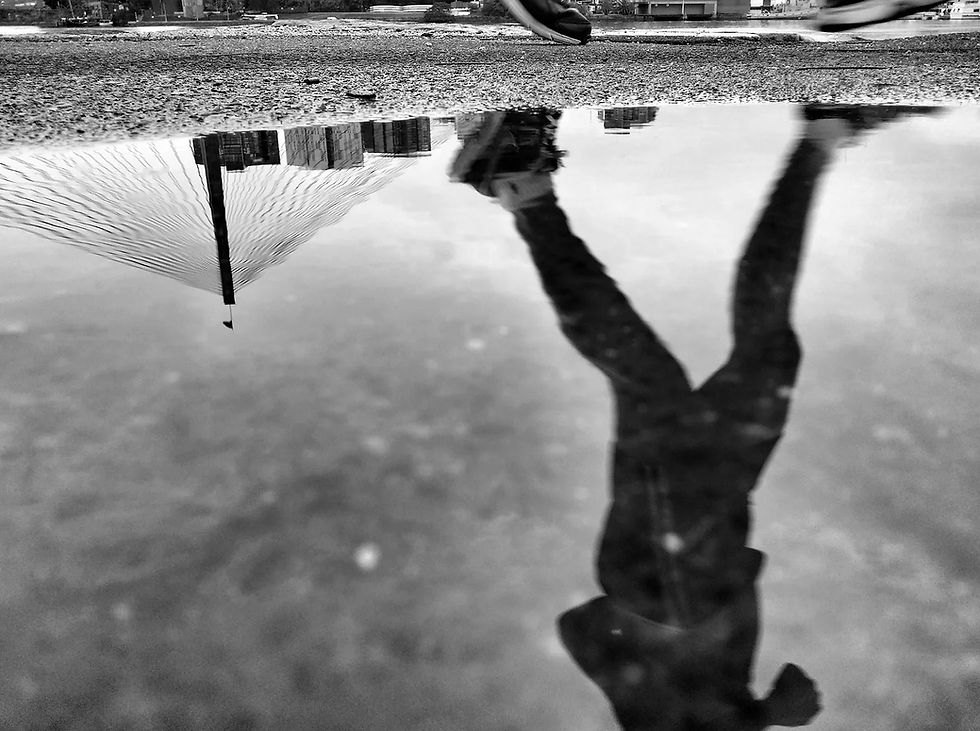From Injury to Insight
- DrTc
- Sep 6
- 3 min read

A physical therapist’s personal story of recovery.
I knew it the moment it happened.
I had just sprinted full speed, dove headfirst, caught a sinking liner, popped up to my knees, and unleashed the hardest throw I could to double the runner off first base.
As I released the ball, my right oblique seized—a sharp, piercing pain shot through my right side.
I stood up and ran a quick systems check. Turning right? Fine. Turning left? Immediate pain.
The thought crept in:
Is this the moment my 49-year-old body tells me I can’t play the sport I love the way I used to?
Here’s the truth: this wasn’t age catching up with me. It was an accident waiting to happen.
The Warning I Ignored
Five days earlier, during batting practice, I felt a smaller tug in my right oblique. I stopped immediately, stretched, and carried on.
The next day, no pain. Three days later, warming up before the game, the tightness crept back.
Did I listen?
No.
And that choice caught up to me.
The Emotional Rollercoaster
In the days that followed, my mind went to familiar places:
Frustration with my ego for pushing through warning signs.
Fear that my season might be over.
Worry about whether I could still work, and how long rehab would take.
Despite being a doctor of physical therapy, a strength and conditioning coach, and a mobility coach—I faced the same doubts and obstacles as my clients.
This blog is about how I worked through it, and what I learned on the other side.
Step 1: Ask for Help
This is the hardest step for most men I know. It was for me too.
Thankfully, I’m married to a brilliant physical therapist—my wife, Dr. Jess.
She assessed me, gave me objective feedback, and together we built a plan to manage pain and movement limitations without sidelining me completely.
The First 10 Days
My priorities were simple: reduce pain, keep moving.
I used Isometric exercises to target my obliques and calm down my pain.
Using a TENS unit provided me relief after my rehab.
A Heating pad eased the nightly tightness and muscle guarding I was experiencing.
Within 10 days, I had control of my pain.
Beyond Pain Relief
Phase 2 began immediately: “Train What You Can.”
Instead of grinding through the same rehab drills, I looked at what I could do safely. This made the process mentally more engaging and even enjoyable.
I added:
Daily work on an Air bike (using arms + legs)
Dynamic warm-ups
External resistance training for my obliques
Bodyweight squats, deadlifts, lunges, step-ups
Pushing/pulling upper body movements
Recovery Foundations
Nutrition: I already ate whole foods, but bumped up protein intake to give my muscles the raw materials to heal.
Sleep: My most powerful recovery tool. I set a goal of 9–10 hours per night, with a consistent bedtime/wake time to reset my circadian rhythm.
My Return to Play
Two weeks in, I was 90% pain-free.
To test myself, I returned to the gym at the beginning of week 3 with a tentative goal of playing at the end of the week.
Day 1: 50% of normal weights, slow and steady.
Days 2-5: Gradual strength training and running progression as well as reintroducing throwing, then hitting, then both together.
At 21 days, I was back in the lineup—zero pain, zero soreness.
What I Learned
Your injury can be your greatest teacher.
Four days before this injury, my body gave me a warning. I ignored it.
Pain isn’t always an enemy—it’s often a signal to help us make a better choice. If we listen, we stay connected to ourselves, even when limited.
I’m not in my athletic prime. But age wasn’t the cause of this injury. My ability to listen—or not listen—was.
If you’re navigating injury, know this:
Don’t let pain be the last word in your story.
Lean in. Ask for help.
See your injury as an opportunity to grow stronger and wiser.
And remember, you don’t have to go through it alone. I’ll be here to help you work through whatever stands in your way.
ABOUT THE AUTHOR






Comments